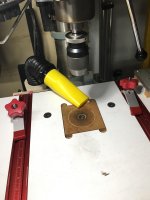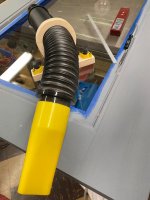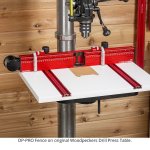Crazyraceguy
Member
- Joined
- Oct 16, 2015
- Messages
- 5,554
Packard said:My biggest culprit for dust and chips is my router. The radial arm saw has a dust collection port, but that is a joke. The chop saw kicks the dust against a wall and it is easily vacuumed up. But dust collection is kind of futile.
Ive heard that Festool’s routers have effective dust collection. That would be a motivation to make that purchase.
The drill press, with forstner bits, produces prodigious amounts of chips. But those bits are used infrequently.
They do [member=74278]Packard[/member], even when the bit is well below the surface of the material. The "chip deflector" accessory can make a flush trim cut into a totally dust free experience, even on 3/4" thick material.
The OF1010 and OF1400 can both do this.
The best solution I have come up with for Forstner bits on the drill press is an air hose nozzle blowing those fluffy curls toward a funnel style collector cup, like they advertise for lathe use or the bottom of a table saw that comes with nothing. The higher volume dust collectors don't create enough static pressure (suction) to pull the chips to the funnel, but it will take them away when "motivated" by the air. It doesn't take much pressure, just constant movement in the right direction.
This kind of assumes that one has a compressor that is capable of running like that for a while.




